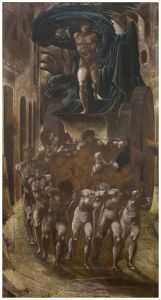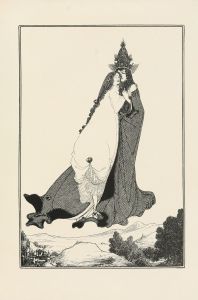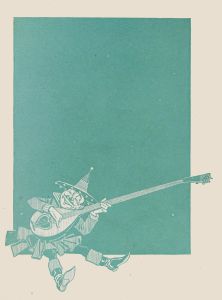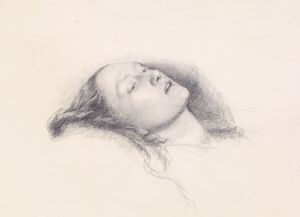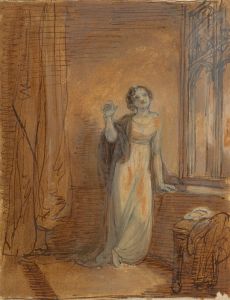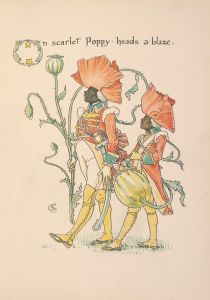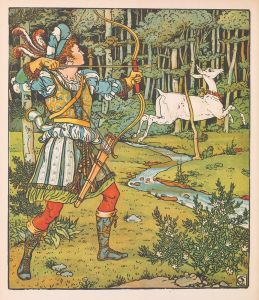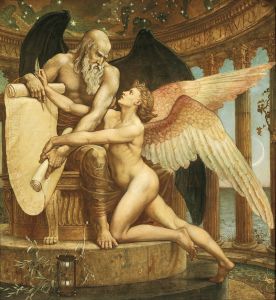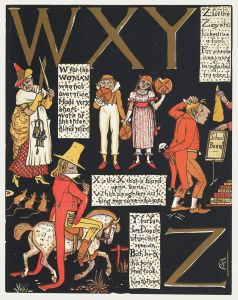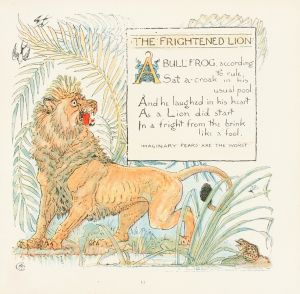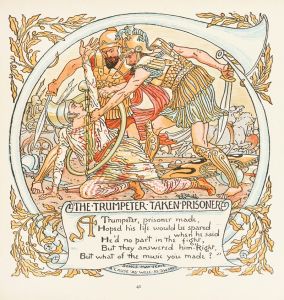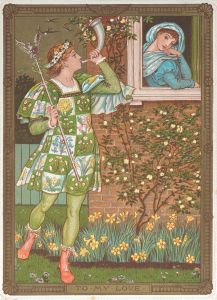
The Absurd A.B.C Pl 5
A hand-painted replica of Walter Crane’s masterpiece The Absurd A.B.C Pl 5, meticulously crafted by professional artists to capture the true essence of the original. Each piece is created with museum-quality canvas and rare mineral pigments, carefully painted by experienced artists with delicate brushstrokes and rich, layered colors to perfectly recreate the texture of the original artwork. Unlike machine-printed reproductions, this hand-painted version brings the painting to life, infused with the artist’s emotions and skill in every stroke. Whether for personal collection or home decoration, it instantly elevates the artistic atmosphere of any space.
Walter Crane was a prominent English artist and book illustrator, known for his contributions to the Arts and Crafts movement and his innovative children's book illustrations. One of his notable works is "The Absurd A.B.C," a series of illustrations that combine whimsical imagery with the alphabet, designed to entertain and educate young readers. Plate 5 from "The Absurd A.B.C" is a part of this series, showcasing Crane's distinctive style and artistic approach.
Walter Crane was born on August 15, 1845, in Liverpool, England. He was deeply influenced by the Pre-Raphaelite Brotherhood and the burgeoning Arts and Crafts movement, which emphasized traditional craftsmanship and the decorative arts. Crane's work often featured intricate designs, vibrant colors, and a harmonious blend of text and imagery, making him a key figure in the development of children's book illustration in the late 19th century.
"The Absurd A.B.C" was published in 1874 and is one of Crane's many contributions to children's literature. The book is characterized by its playful and imaginative approach to the alphabet, with each letter accompanied by a humorous illustration and a short verse. This approach not only aimed to teach children the alphabet but also to engage their imagination and sense of humor.
Plate 5 of "The Absurd A.B.C" continues this theme, featuring a letter of the alphabet with an associated illustration and verse. Crane's illustrations are known for their attention to detail and the use of bold lines and colors, which were intended to capture the attention of young readers. His work often included elements of fantasy and whimsy, reflecting the Victorian fascination with fairy tales and folklore.
Crane's influence extended beyond children's books; he was also involved in the design of wallpapers, textiles, and other decorative arts. His work was part of a broader movement that sought to integrate art into everyday life, breaking down the barriers between fine art and applied art. This philosophy was central to the Arts and Crafts movement, which sought to counteract the negative effects of industrialization by promoting handcrafted goods and traditional techniques.
In addition to his artistic achievements, Crane was also a committed socialist and used his art to express his political beliefs. He believed that art should be accessible to all and that it could play a role in social reform. This belief was reflected in his involvement with the Socialist League and his contributions to various socialist publications.
Walter Crane's legacy as an illustrator and designer is significant, and his work continues to be celebrated for its creativity, craftsmanship, and social consciousness. "The Absurd A.B.C" remains a testament to his ability to blend education with entertainment, using art to inspire and delight young audiences. Through his innovative approach to children's literature and his commitment to the ideals of the Arts and Crafts movement, Crane left an indelible mark on the world of art and design.





